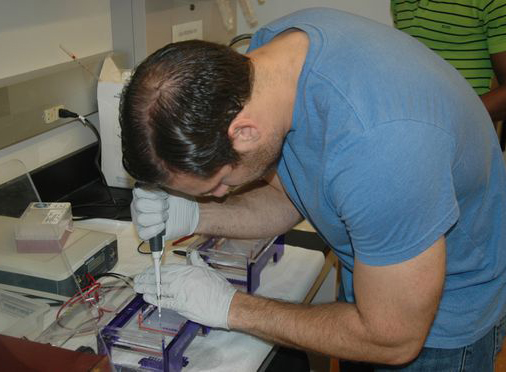Dr. Richard Cripps' Undergrads Trained In New Genome Editing Technology
News
Posted: Mar 31, 2016 - 12:00pm

One of education’s biggest challenges is keeping up with technology to ensure that students are familiar with the latest technological advances and enabling them to be successful during their academic careers and beyond. This is especially true in the physical sciences where technology goes hand in hand with research.
One such technical advance involves new genome editing technology used to manipulate genome sequences and gene expression. CRISPR, or clustered regularly interspaced short palindromic repeats, is a natural defense mechanism found in a variety of bacteria. Scientists have adapted CRISPR into a new technology that has come online in the last half dozen years or so, enabling scientists to efficiently edit genomes with flexibility and precision.
It’s a technique that allows scientists to manipulate a DNA sequence in a very specific and controlled way. The process involves a CRISPR RNA (crRNA) and a CRISPR associated gene (Cas9), that induce double-stranded DNA breaks at a targeted location that can lead to gene mutation in the DNA, or controlled alteration of the DNA sequence.
Traditionally, researchers might have used chemicals or radiation to make random changes in a DNA sequence. Then, they’d have to go in and figure out what changes were made, which is time intensive. With CRISPR, it’s possible to make changes to very specific locations which is an advantage because scientists can target individual genes they’re working on and or interested in, in order to understand more about how the genes work in the life of the animal.
Students in Professor Richard Cripps’ Biology class 498L/598L are using the new technology to rapidly create gene mutations by generating the short crRNA molecules that in turn target specific DNA sequences through complementary based pairing. The CRISPR technology, which continues to emerge, has been adapted for genome editing in a variety of systems including the fruit fly Drosophila, which Cripps utilizes in his class.
Read the full story at UNM Newsroom
